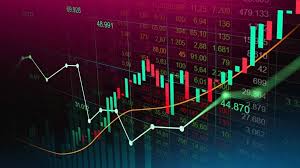
4 minute read
Best months to trade forex? worst months to trade forex
Best Months to Trade Forex? Worst Months to Trade Forex?
Introduction
Forex trading is a highly dynamic market influenced by multiple factors, including economic reports, geopolitical events, and seasonal trends. Understanding the best months to trade forex and the worst months to trade forex can significantly impact a trader’s profitability. In this guide, we will analyze which months offer the best trading opportunities and which months should be approached with caution.
Top 10 BEST Forex Brokers
1️⃣ Exness: Open Account | Go to broker
2️⃣ JustMarkets: Open Account | Go to broker
3️⃣ XM: Open Account | Go to broker
4️⃣Pepperstone: Go to broker
5️⃣Avatrade: Open Account | Go to broker
6️⃣FpMarkets: Open Account | Go to broker
7️⃣XTB: Go to Website
8️⃣FBS: Go to Website
9️⃣Amarkets: Go to Website
Understanding Seasonal Trends in Forex Trading
Seasonality in forex trading refers to patterns that tend to repeat over time, affecting currency prices. By studying historical data, traders can identify the best months to trade forex and the worst months to trade forex, allowing them to optimize their trading strategies accordingly.
Best Months to Trade Forex
1. January – Strong Market Recovery
Liquidity: The forex market regains liquidity after the holiday season.
Volatility: Increased activity from institutional traders leads to strong market movements.
Best Currency Pairs to Trade: EUR/USD, GBP/USD, USD/JPY.
2. March – Market Trends Solidify
Liquidity: Institutional traders establish clearer trends.
Volatility: Increased due to end-of-quarter adjustments.
Best Currency Pairs to Trade: USD/CHF, GBP/JPY, EUR/JPY.
3. April – Bullish Market Trends
Liquidity: Central banks often make significant monetary policy decisions.
Volatility: Major trends emerge.
Best Currency Pairs to Trade: AUD/USD, USD/CAD, EUR/USD.
4. September – Market Reopens Strongly
Liquidity: Traders return from summer vacations, increasing market participation.
Volatility: High due to renewed institutional activity.
Best Currency Pairs to Trade: USD/JPY, EUR/GBP, GBP/USD.
5. October – High Market Engagement
Liquidity: Strong due to the beginning of Q4 trading.
Volatility: Heightened as traders position themselves for year-end moves.
Best Currency Pairs to Trade: EUR/USD, USD/JPY, AUD/USD.
Worst Months to Trade Forex
1. December – Low Liquidity and High Spreads
Liquidity: Decreases as institutional traders take holidays.
Volatility: Unpredictable and erratic price movements.
Worst Currency Pairs to Trade: Most major pairs due to market inactivity.
2. August – Summer Slump
Liquidity: Many traders and financial institutions are on vacation.
Volatility: Reduced, leading to slow-moving markets and false breakouts.
Worst Currency Pairs to Trade: EUR/USD, GBP/USD, USD/JPY.
3. May – Transition Period
Liquidity: Mixed, as traders adjust positions post-Q1 earnings.
Volatility: Erratic due to varying economic reports.
Worst Currency Pairs to Trade: USD/CHF, EUR/GBP.
4. June – Uncertain Market Conditions
Liquidity: Lower due to early summer effects.
Volatility: Can be misleading due to conflicting market data.
Worst Currency Pairs to Trade: AUD/USD, EUR/JPY.
Read more review by issuu:
Factors Affecting the Best and Worst Months in Forex Trading
1. Liquidity Levels
Higher liquidity means tighter spreads and smoother price movements, making trading more efficient.
2. Market Volatility
High volatility can be beneficial for experienced traders but risky for beginners.
3. Economic Events and Reports
Major economic data releases influence currency values significantly.
4. Institutional Trading Activity
Large institutions, such as banks and hedge funds, impact market trends based on their trading volume.
Tips for Navigating Forex Seasonality
Plan Ahead: Be aware of seasonal trends to adjust your strategies.
Use Proper Risk Management: Avoid excessive risk in low-liquidity months.
Monitor Economic Calendars: Stay updated on major financial news and events.
Adapt to Market Conditions: Use different strategies for high and low volatility periods.
Conclusion
Understanding the best months to trade forex and the worst months to trade forex allows traders to maximize profits and minimize risks. By leveraging seasonal patterns, traders can optimize their strategies and avoid unproductive market conditions. Always incorporate proper risk management and stay informed to enhance trading success.

